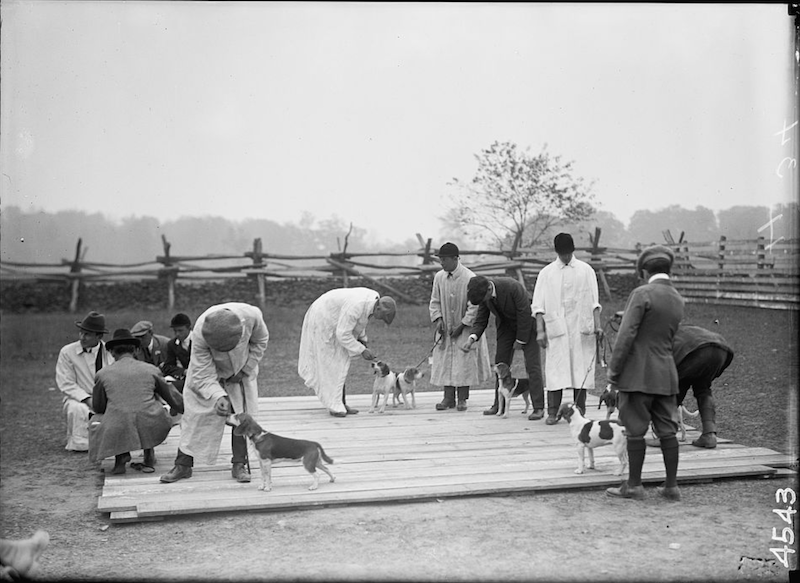
When photographers, Harris & Ewing, published this image from the National Beagle Club of America’s show in 1914, little did they know that over 100 years later, some of us would look at the photo and wonder: What’s up with the platform? And all those white coats? Was every Beagle exhibitor back then a physician?
We dip into hunt history to learn more, and it starts with horses.
Horsemen have long regarded strong, sound hooves as the foundation of a good mount. The expression, “No hoof, no horse,” alluded to the fact a horse was, figuratively speaking, built from the ground up. Put another way, without healthy feet, a horse was useless in a hunt. Much of what we know about dog structure has been inherited from the horse world, and working hounds, which is to say the dogs that accompanied a hunt had to have strong, tight, thickly padded feet to run for miles over challenging terrain.
Historically, hunt hounds (Foxhounds, Harriers, Beagles, etc) were free baited and judged on flagstones to show off tight correct feet, and exhibit the dogs’ conformation and suitability as potential breeding animals.
Colloquially, this was referred to as “showing on the flags,” but in modern times, sometimes a small concrete pad replaced flagstone, and when a venue for the hound show didn’t have flagstones built in, portable wooden platforms were used as temporary surfaces. Tradition, however, continues in many shows such as the The Quorn Hunt which took place just a week ago. As you can see by clicking here, flagstone can still be found.
As for the men in white “lab” coats, those coats were called “dusters” or “kennel coats,” and like the flagstone, had its roots in practicality. The coats kept the handler’s clothing clean while feeding, administering medicine, or getting them from the kennels to the judging surface for judging, and coat pockets kept treats. After a while, the attire became a traditional part of hound showing, particularly at English foxhound shows. At one time, English hound handlers typically wore bowler hats, but sometimes “flat caps” were worn, instead.
Some sources add that white coats helped create a sense of impartiality among handlers by minimizing the potential for judges to be influenced by a handler’s personal style or status, and also provided contrast against the dogs making it easier for judges and spectators to focus on the dogs’ features and movements without being distracted by the handler’s attire. The white coats also symbolized cleanliness and professionalism by subliminally alluding to the hygiene of a medical setting.
We are fans of tradition, and are appreciative that a few (too few, if you ask us) benched dog shows remain. We love that The Quorn Hunt, for one, keeps “Showing on the Flags” alive.
Our thanks to Donna Smiley for helping us with the term.
